Southwestern Idaho

The Rock Creek Station was started in 1864 at the junction of the
Oregon Trail and the Kelton Freight Road. The stagecoach station is no
more, but the store, seen in the background, is still standing.
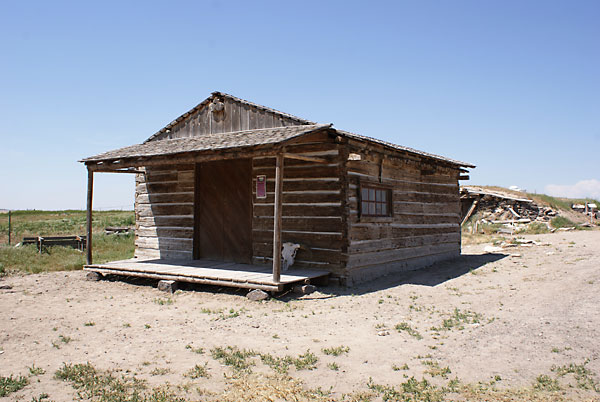
The Rock Creek Store was built in 1865. The original sod roof was
replaced with shingles in 1880. Local residents bought supplies here,
picked up their mail, and voted here until it was closed in 1897.
Behind the store are two cellars for storing food.

Shoshone
Falls on the Snake River. The falls are said to be higher than Niagara
Falls. The attendant who collected our entrance fee said the water flow
is low because (1) river flow is being reduced to fill an upstream
reservoir and (2) the winter snow melt has not yet started.

The
bridge over the Snake River at the city of Shoshone appeared to be a
popular place for paragliding. This person has just jumped and his
parachute has not yet opened.

The
parachute is now almost fully opened. It was ride of only a minute or
two to the bottom and then a long, and very steep, walk back up.
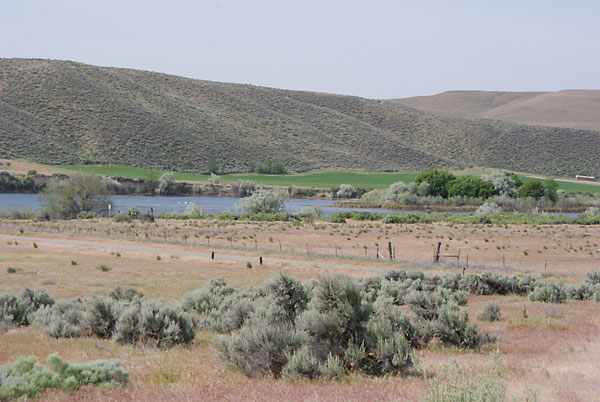
Three
Island Crossing was a place on the Snake River where emigrants could
get down to the river and use three islands as stepping stones to cross
over to the north side. The reason for doing so was to get access to
better grass for their livestock and wood for cooking. The crossing was
still dangerous, especially if the river was high, many wagons were
lost here, and some people drowned. Each year in August, the local
people do a re-enactment of the crossing and they still lose wagons.
Those emigrants who didn't want to chance the river crossing had the
option to stay on the south side and follow an altermate route to
Oregon.
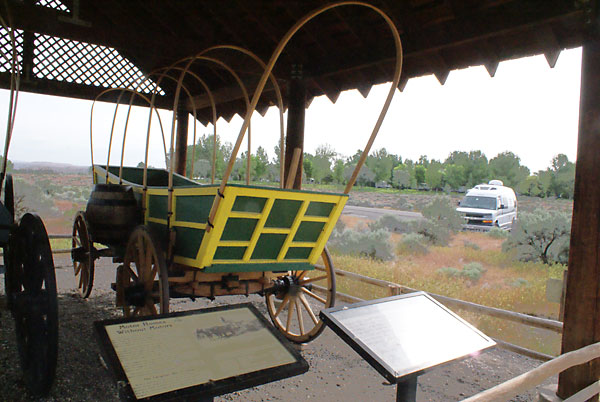
The
state park here as an excellent history and education center focusing
on the Oregon Trail. This is one of their prairie schooners, with our
more modern "prairie schooner" in the background.
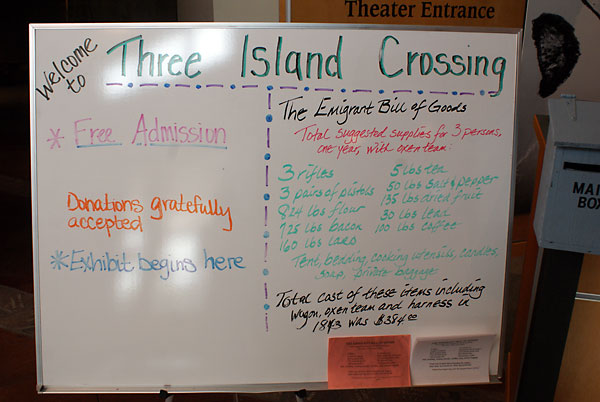
One
listing of the supplies the emigrants needed for the journey. In
addition to the cost of the supplies, they had to forego any income
during their trip, and probably for another year in Oregon until the
next year's crops could be harvested. It was not something that you
undertook lightly.
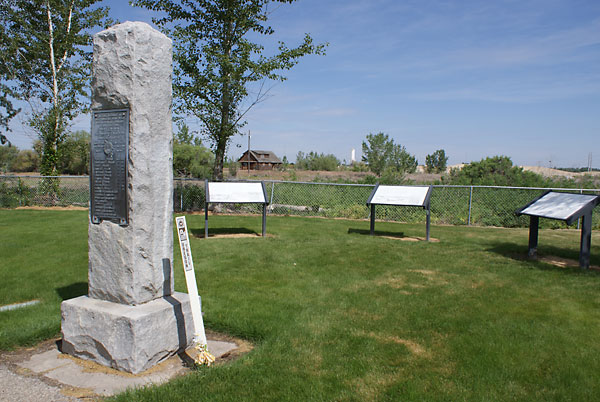
The
site of the Ward Massacre near Caldwell, ID. It was here in August 1854
that Indians attacked the 20 member Ward Party, which was headed for
Oregon. Only two boys survived the attack.

The
plaque on the monument listing those who died here. Despite all the
publicity given to problems with Indians at that time, and in 20th
century movies, relatively few people died from Indian attacks. About
10 percent (about 30,000 people) of those making the journey, died
enroute. The most common cause of death was disease, primarily cholera,
followed by accidents (drownings, accidental gunshot wounds, crushed
under wagon wheels, etc.). Relations with the native Americans were for
the most part beneficial; they traded with Indians for fresh vegetables
and fish, and often hired them to help with river crossings. Tension
between native Americans and Euro-Americans did increase in the 1850s
as the number of emigrants increased because of the Californian gold
rush and the wild game that Indians depended on for food were either
shot or scared away by emigrants. Cultural misunderstandings on both
sides were often to blame for the hostilities. I read somewhere that
there were only about 360 documented cases of people being killed by
Indians.









